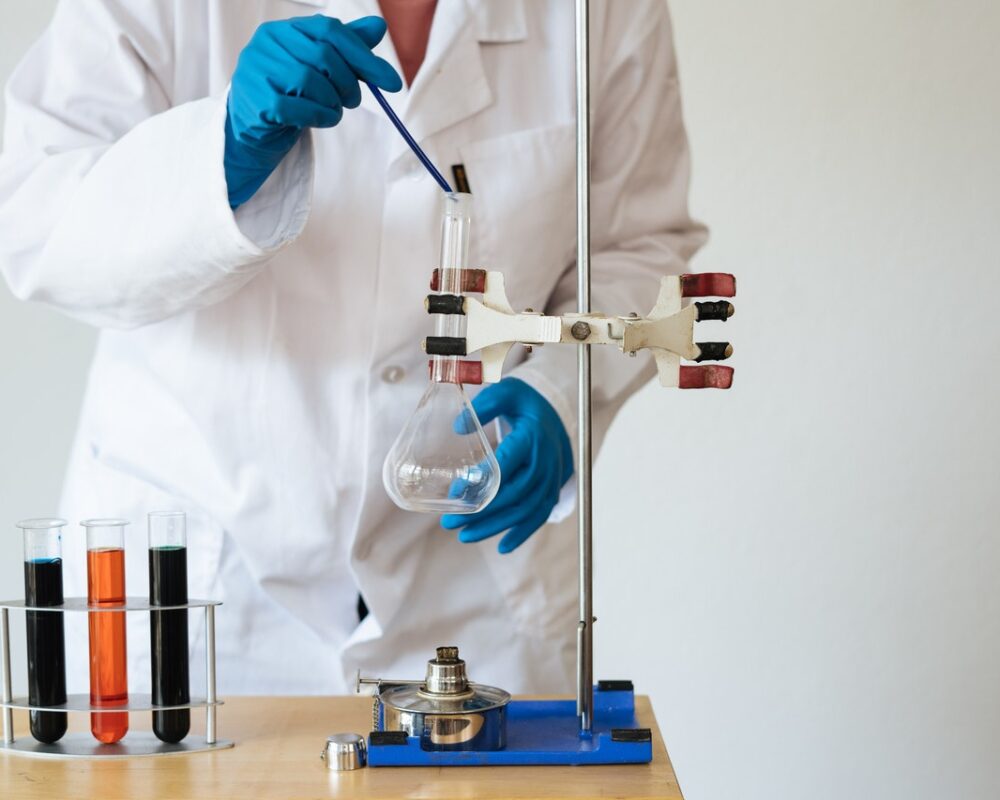Unless you’re one of the very few people in the World who are completely and utterly content with your business’ current performance, then you should be actively looking for ways that you can improve!
One of the ways that you can continually grow is by making changes to your marketing tools as part of your PPC campaign strategy. Specifically, making changes to your Google Ads campaigns.
The only thing is, making changes to your campaigns can be risky. What if the change backfires and ends up decreasing your sales?
Well fear not because we’ve got the answer to your prayers. Introducing: A/B tests. Unless you’ve already met, in which case how about a catch up?
What is A/B testing?
A/B testing simply means running an experiment where you compare two things side by side.
If you have a tried and tested cookie recipe and you wonder if it would taste nicer if you added more sugar, you can bake up a batch of ol’ faithful as well as your new cookies and then offer them to people without them knowing which is which (for ultimate fairness!).
But how does this relate to Google Ads? Let me hand over to our resident PPC aficionado, JP, for an overview on what A/B testing really means when applied specifically to Google Ads:
“A/B testing, otherwise known as split testing, in Google Ads is when you make a copy of your current campaign exactly how it is and then make a change to one of those copies.
Then, you can run both campaigns at the same time with a percentage of your audience going to the old version, and another percentage going to the new version so you can see how they both perform side by side in real time.
You can break your tests into two different areas. Area one, tests and experiments within Google Ads itself. And area two tests on your landing page or your website”.
Thanks, JP! Something tells me we’ll be hearing a lot more from you pretty soon…
How to A/B test Google Ads
So now you know what an A/B test is and how it relates to your marketing campaigns, just how do you go about implementing one?
First, you’ll need to decide on what part of your campaign you want to change and how this will affect it. Remember the areas JP spoke about? This is where they come into play.
If you want to trial any changes to your Google Ads campaign set up, whether it’s changes to your keyword bids or what audience you’re targeting, then you’ll make these changes within Google Ads.
When you have enough data to test which ad was more successful, you can then adopt the changes into your Google Ad campaign strategy and off you go.
This includes if you want to try out a new keyword campaign but aren’t ready to fully commit your full budget to it just yet.
Check out our other blogs for more information on how you can calculate your PPC budget.
Split test landing pages
Running a landing page experiment is another great way that you can perform an A/B test.
Let’s hear from JP what he thinks about landing page experiments:
“One of the biggest factors to increasing conversions (sales and leads), is actually improving the conversion rate on the page you are sending people to.
A free and simple way to do this is by using a tool called Google Optimize. This lets you split test the page you are sending traffic to from your adverts.”
Landing pages are great ways to experiment with your ad campaign. Think about it, people click on your ad, then you have to convince them to buy/become a lead. Quite often it’s a well optimised landing page that’s the biggest barrier to earning more sales.

A/B test examples
There are so many potential A/B testing ideas that it can be quite intimidating knowing where to start. So how about some key tips to remember to guide you into making the right decisions?
Start your experiment with a hypothesis. It’s good to frame your hypothesis like this:
‘If X, then Y’, with X being the change you’re making and Y being what you hope to achieve.
So, for example, if you think a more responsive landing page will increase sales, then your hypothesis will be:
‘If our landing page was more responsive then we would get more sales’. Easy as pie!
Just always make sure that your experiments are measuring one specific change. If you make more than one change then it discredits the A/B test as you won’t be able to tell if your hypothesis is correct.
Still with us? Good!
How to report on A/B test results
When it comes to creating an A/B test report, you can either make your own based on the data or use the one provided for you by Google Optimize.
In the Google Optimize Report section, you’ll find all the relevant information about your test displayed in an easy to digest report with a graph and even projected data for the future.
If you want to report on ad performance, you can also look at the data and judge success based on comparisons of cost per conversion and return on ad spend.
How to install Google Optimize
Installing Google Optimize is relatively easy and straightforward. There are a few different Google Optimize snippets that you can install, so we recommend reading this thorough guide to find what option is best for you.
Basically, there are three different snippets to choose from: installing through a Tag Management Solution (TMS), installing synchronously, and installing asynchronously.
Don’t worry if this sounds complicated, you’ll be talked through the set up process.
Google recommends either installing synchronously or asynchronously as they are the most reliable methods.
You’ll need a Google Analytics account before being able to setup Optimize. Once you’re all set, you place a snippet of code into your site’s HTML then you’re good to go and make experiments on your site like a mad scientist! Now where’s the Bunsen burner?

Find an A/B testing Digital Agency
A good way to tell if an agency offering pay per click services in the UK genuinely wants you to succeed is if they offer to run A/B testing for your business.
At Blaze Media, we encourage A/B testing to move your business forward. In the words of JP:
“Test everything! Then let the data make your decisions for you”.
Answers from a PPC expert
We put some popular FAQs to our PPC expert, JP, and here are his answers!
What’s the best way to start A/B testing?
“You could start with something simple, like changing your headline on your landing page to be emotional instead of logical or changing the colour of buttons, or even changing the call-to-action on your page.”
Have there been any recent changes to A/B testing?
“For traditional text ads, we have always been able to create & write 2-3 expanded text ads, let them perform, let us see which advert got more clicks & conversions, pause the lesser performing ad and put a new advert in to test against the previous winner.
Our ability to do this won’t last much longer thanks to Google’s recent update around responsive search ads. This is where we put multiple headlines into an advert and Google’s algorithm will put the advert together from the information we give it.”
How might this change impact the industry?
“Well, some experts suggest the best way to proceed is to run ‘themed’ responsive search ads to test against one another. I.e., a responsive search advert focused around pricing VS a responsive search advert focused around quality of service and testing to see what gets the best results.”
Loads to take in there, so if you want to know more – or you want our Paid Media team to take a look over your campaigns then drop us a line!


